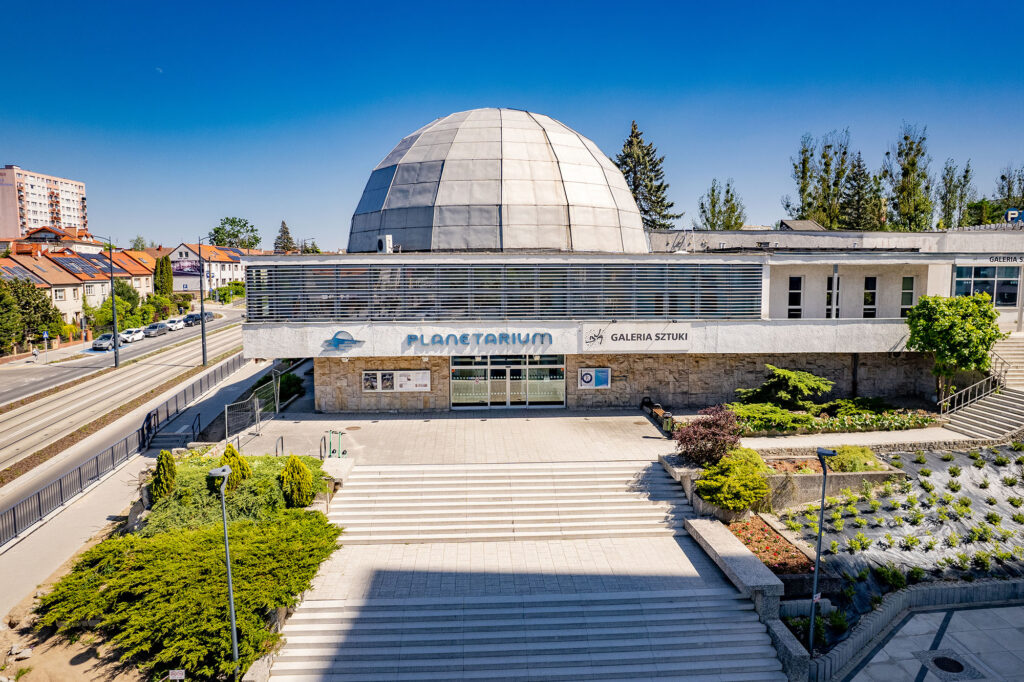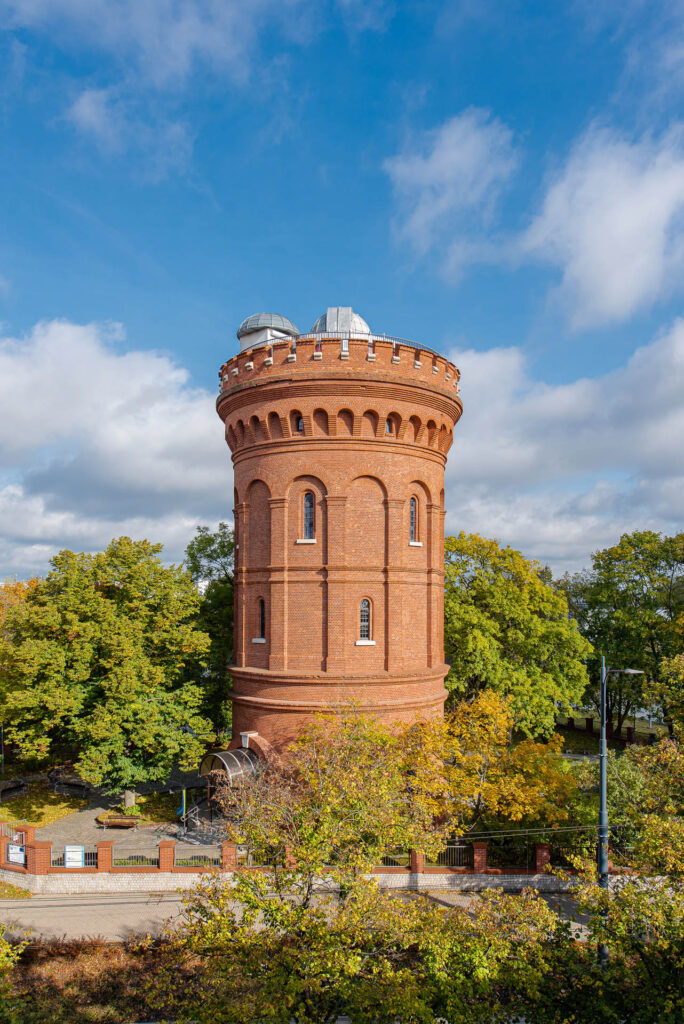Nicolaus Copernicus and Olsztyn's heritage
Olsztyn – the capital of Warmia and Mazury – remembers its Great Citizen. This is testified to by the monuments and memorabilia relating to Nicolaus Copernicus that are cherished with great care, as well as by the valuable films that we have the honor of watching and judging at international film festivals. Because, after all, it was in Olsztyn that Nicolaus Copernicus stayed in the years 1516-1521 and managed the manors of the Warmia Chapter in the Olsztyn and Melzac communes, carried out a campaign to colonize abandoned fields in the villages owned by the chapter, and after the outbreak of war with the Teutonic Knights took an active part in the defense of the city. He also conducted research here and created his scientific works.


Olsztyn should be on every tourist’s itinerary. At the Museum of Warmia and Mazury, in the Castle where Nicolaus Copernicus stayed and worked, in the chamber where he lived, you can see a permanent exhibition about him. A great attraction for visitors is the astronomical plaque painted on the cloister wall by the Astronomer himself. It was used to make observations of the Sun’s movement in the sky. There are as many as two monuments to him in Olsztyn, the first, the oldest one from 1916, and the second, the Copernicus bench unveiled in 2003 on the occasion of the 650th anniversary of the city. We should also mention the Olsztyn Planetarium and Astronomical Observatory. This is also a place dedicated to Copernicus. In the planetarium, among other things, you can see Copernicus’ reconstructed measuring instruments.

During his stay in Olsztyn, Nicolaus Copernicus not only worked on his most important astronomical work, “On the Revolutions of the Heavenly Spheres,” but also formulated an important theorem on money.
He stopped the Sun, moved the Earth… this poem is known to every Pole. Everyone knows that Nicolaus Copernicus was a great astronomer who changed the perception of the world. His work “On the Revolutions of the Celestial Spheres”, in which he laid out his theory of the heliocentric structure of the universe, was a coup in science and in the widely held worldview of the time. That Copernicus was involved in other fields of science and practice is now known to few, and he was a physician, administrator of church estates, administrator in charge of officials and exercised judicial authority. He was also an economist dealing with problems related to the introduction of money into the market.

Thanks to the support of his uncle, Bishop of Warmia Lukas Watzenrode, Nicolaus Copernicus studied astronomy, mathematics and philosophy at the University of Cracow,. At the latter he received a doctoral degree. After his studies, in 1503 he became secretary to the bishop of Warmia in Lidzbark, and later served as chancellor and visitor of the chapter estates astronomy, humanities and canon law at the Jurist University in Bologna, medical sciences and ancient sciences at the University of Padua, and canon law at the University of Ferrara. In 1511 he settled in Frombork, where he managed the chapter’s holdings and where he conducted astronomical observations.
On November 8, 1516, he appeared in Olsztyn, where he settled in the Castle, from which he served as administrator of the chapter’s estates in Olsztyn and Pieniężno (formerly Melzak). Upon his return to Frombork, he continued to edit “De revolutionibus…” while also serving as chapter visitor, chancellor and general administrator of the Diocese of Warmia.

He had an extraordinary mind and was a keen observer of not only astronomical but also economic phenomena.During his stay in Olsztyn, he not only worked on his most important astronomical work, but also formulated an important law on money. Commissioned by Warmian Bishop Fabian Luzjanski, he then wrote a treatise on monetary reform. The first version of it, “Meditations…” was written in 1517 and was addressed only to the bishop of Warmia. The second, expanded, with the title “Principles of Minting Coinage,” consisted of two parts. In the second part, Copernicus dealt with the problem of, as he put it, “spodlenie”, i.e. the decline in the value of money minted in Royal Prussia, while in the first part, more important for the history of economics, he formulated a law later called Copernicus-Gresham’s law. It concerned the displacement of better money from circulation by worse money. In the introduction to the cannon published in 1519, he wrote:
“Although there are innumerable calamities as a result of which kingdoms, principalities and republics used to collapse, in my opinion, four are the most potent: discord, mortality, infertility of the land and the debasement of coinage. The first three are so obvious that no one contradicts them, but the fourth, concerning coinage, is recognized only by a few, and those who think more deeply as a result of the fact that it affects the collapse of the state not immediately and violently, but slowly and secretly. “*)
Money is, according to Copernicus, ”…gold or silver, marked according to the stipulation of each state or its superiors, with which is paid the value of things bought and sold. From this it follows that it is a measure of value. In turn, it is necessary that the measure have a fixed and unchanging state. For where this does not exist, confusion of the common order inevitably follows, and buyers and sellers are often cheated, as when it does not have a constant size, cubit, root or weight weights. In this way, the measure of esteem and trial (intrinsic value) of a coin should be understood.” He also notes that “exchanges could be made on the basis of the weight of gold or silver alone due to the fact that gold and silver by common agreement of people everywhere are valued.” He was, however, a promoter of transactions using money, and wrote that trade was definitely made easier by coins with a single common mark to announce that it contained fair portions of gold and silver, and the mark itself reinforced trust. Gold money was extremely rare in use at the time and was only used for international transactions. The primary means of payment were silver coins, which contained an admixture of copper in addition to precious bullion. As Copernicus wrote in his treatise, there are three arguments in favor of minting copper-doped coins:
1. the admixture of copper makes it more difficult to melt coins into bullion bars,
2. the admixture makes it possible to maintain a convenient size of coins,
3. the abrasion of coins in circulation is made more difficult.
Serving in an administrative position in the Warmian chapter, Copernicus noted that “coin spoilage” disturbs public order. Money spoiling was perpetrated both by rulers in neighboring countries, but also by Polish kings and dukes, cities with the right to mint coins and mincers, i.e. employees of mints minting coins. The monetary system of Royal Prussia experienced great difficulties. There were both good and bad coins in circulation.

Monetary spoilage was primarily subject to silver money, as the primary transaction money. Copernicus stated that a decline in the value of coins occurs when more copper is added to silver or the weight of coins is reduced, or both are done. Another reason for a decrease in the value of coins is when excessive amounts of coins are put into circulation. Coin depreciation also occurs under the influence of use and abrasion, but the biggest mistake and detriment to the country is the introduction of a new worse coin – with less silver content – in order to make a profit, while keeping the old coin in circulation. As a result of such an action, everyone gets cheated. Although the rulers minting the new coins enjoy a temporary, however modest, profit, but in time the broken money will return to them representing a lower value.
“Where we wish to introduce a new coin, we should withdraw the old one completely and at the mint issue for the old coins brought there-new ones, but not according to the previous estimate of the old coin, but according to the value of the silver in them, and where we do not do this, the old coin will infect the estimate of the new one.” – this is the law Copernicus formulated in the “Principles of Minting Coinage,” considering it also the most important postulate to the issuers of money.
To heal the circulation of money in Royal Prussia, Copernicus made six demands:
1. not to introduce new coins without deliberation and consultation with significant citizens;
2. establish a single minting place for the country, a mint that could issue coins in the name of, for example, different cities, but of the same weight and value;
3. when a new coin is introduced, the old one should be withdrawn and its circulation banned;
4. so that invariably, for eternity, only 20 twenty-grosz fines and no more should be minted from a pound of pure silver, deducting what should be deducted for minting expenses. In this way, the Prussian currency will be adapted to the Polish, and 20 Prussian pennies, as well as Polish, will form a silver ingot;
5. beware of issuing too many coins;
6. all types of coins should be introduced at the same time, that is, that skojce or pennies, solids and obols should be minted together.
Copernicus presented a treaty on the principles of coinage at the congress of Prussian states in Grudziadz on March 21, 1522. Unfortunately, with monetary reforms, not all his demands were taken into account.
Several decades later, similar views on the displacement of good money by worse money were made by English financier Thomas Gresham in an explanation given to Queen Elizabeth I as to why old coins with more gold bullion disappear from circulation after new, lighter ones are introduced. The law governing this phenomenon was named after him. It was not until the 19th century that it came to the consciousness of economists and researchers that Nicholas Copernicus had formulated this law earlier. Currently, it is most often referred to as the Copernicus-Gresham law.
According to the concept of the staff of the Olsztyn City Hall, a very interesting short film was made telling the story of Copernicus’ economic Law. It brilliantly introduces us to the figure and work of the great scientist, and at the same time makes viewers aware of the importance of his stay in Olsztyn in his life.
*) Quotes from the works of Nicolaus Copernicus based on the book “Nicolaus Copernicus treatises on coinage and other economic writings” compiled by Jan Dmochowski. Published by Gebethner and Wolf 1923.
Author of the text: Zbigniew Żmudzki
Translation: Wojciech Jaworek
Photos: City Hall of Olsztyn
